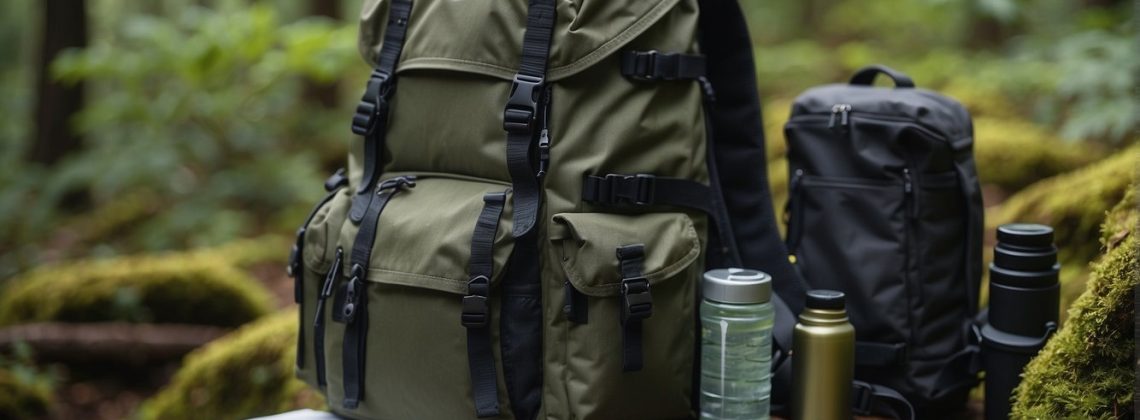
A bug out plan is a strategic blueprint for safely evacuating from your current location in the event of an emergency. It outlines specific steps to take when immediate action is required, whether due to natural disasters, political unrest, or other crisis scenarios. This plan is designed to maximize your chances of reaching safety while minimizing danger and confusion during high-stress situations.
Preparedness is the foundation of any solid bug out plan. It includes having a well-thought-out route, designated meeting points for family or group members, and awareness of potential hazards along the way. The plan should also entail a comprehensive list of supplies and gear that is regularly maintained to ensure it’s in ready condition. Practicing your bug out plan is as important as creating it, as familiarity with the process can significantly improve your response in a real emergency.
Key Takeaways
- A bug out plan is a preparedness strategy for quick and safe evacuation.
- Regular maintenance of supplies and practice of the plan are crucial.
- Incorporating family or group needs is essential for an effective plan.
Understanding the Bug Out Concept
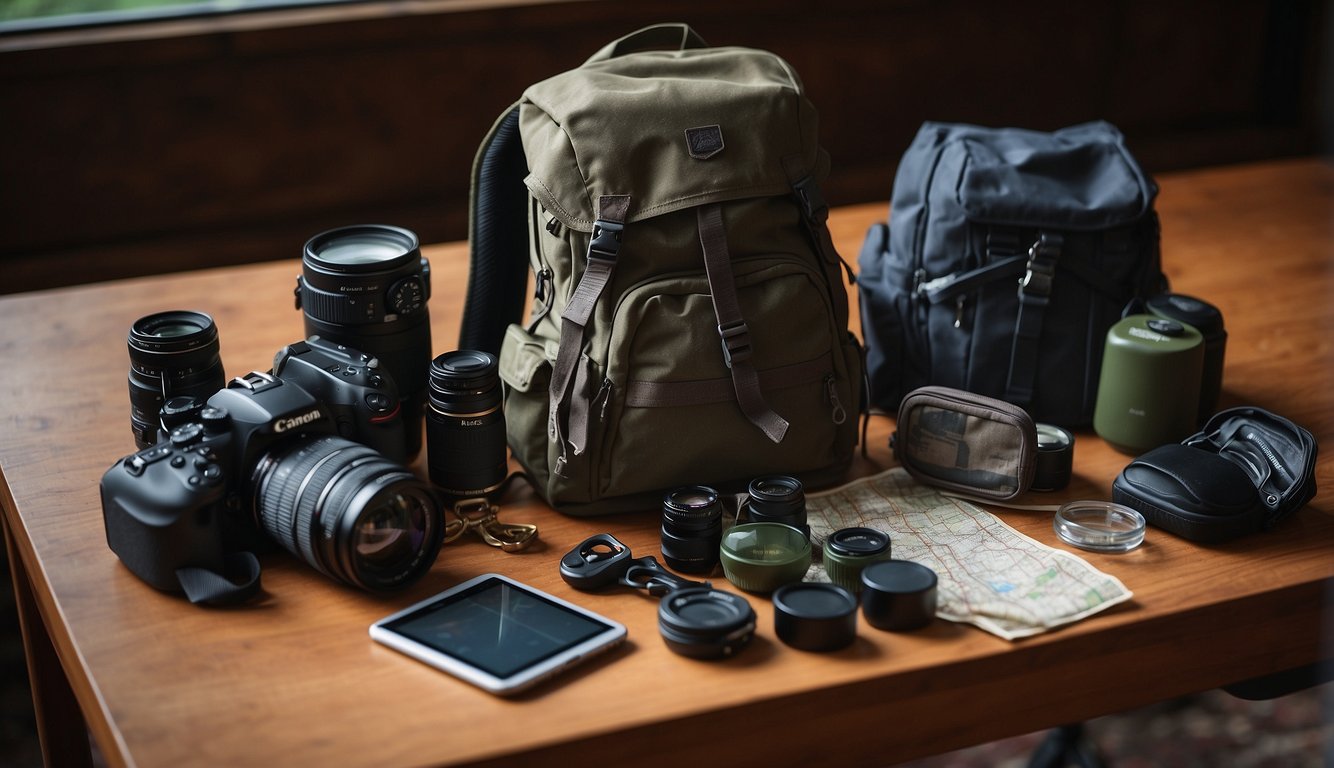
Preparing for an emergency requires understanding the essential strategies for survival, including the concept of bugging out. This entails a well-developed plan for evacuation that maximizes safety and efficiency in times of crisis.
Basics of Bugging Out
Bugging out refers to the decision to leave your current location to find a safer place due to an emergency. Your bug out plan should include a detailed route, a destination, and a comprehensive list of necessary supplies. A standard bug out bag typically contains items like:
- Water and water purification tools
- Non-perishable food
- First-aid supplies
- Shelter and warmth items, such as a tent and sleeping bag
- Clothing suitable for your environment
- Defense items as permitted by law
- Personal documents and cash
Your plan should be practiced regularly to ensure you can evacuate quickly and efficiently.
Differences Between Bugging Out and Bugging In
Bugging in, in contrast, means staying put in your current location during an emergency and relying on at-home preparations. Comparing the two:
| Bugging Out | Bugging In |
|---|---|
| Immediate evacuation when staying is more dangerous than leaving. | Remaining in place when it’s safer or when there’s nowhere to go. |
| Involves transporting supplies, thus limited by mobility and space. | Allows for more extensive preparations and stockpiling of supplies. |
| Requires secure, possibly pre-arranged destinations. | Depends on the security and sustainability of your home. |
Your decision to bug out or bug in should be determined by the nature of the emergency and your preparedness for either scenario.
Essential Components of a Bug Out Plan
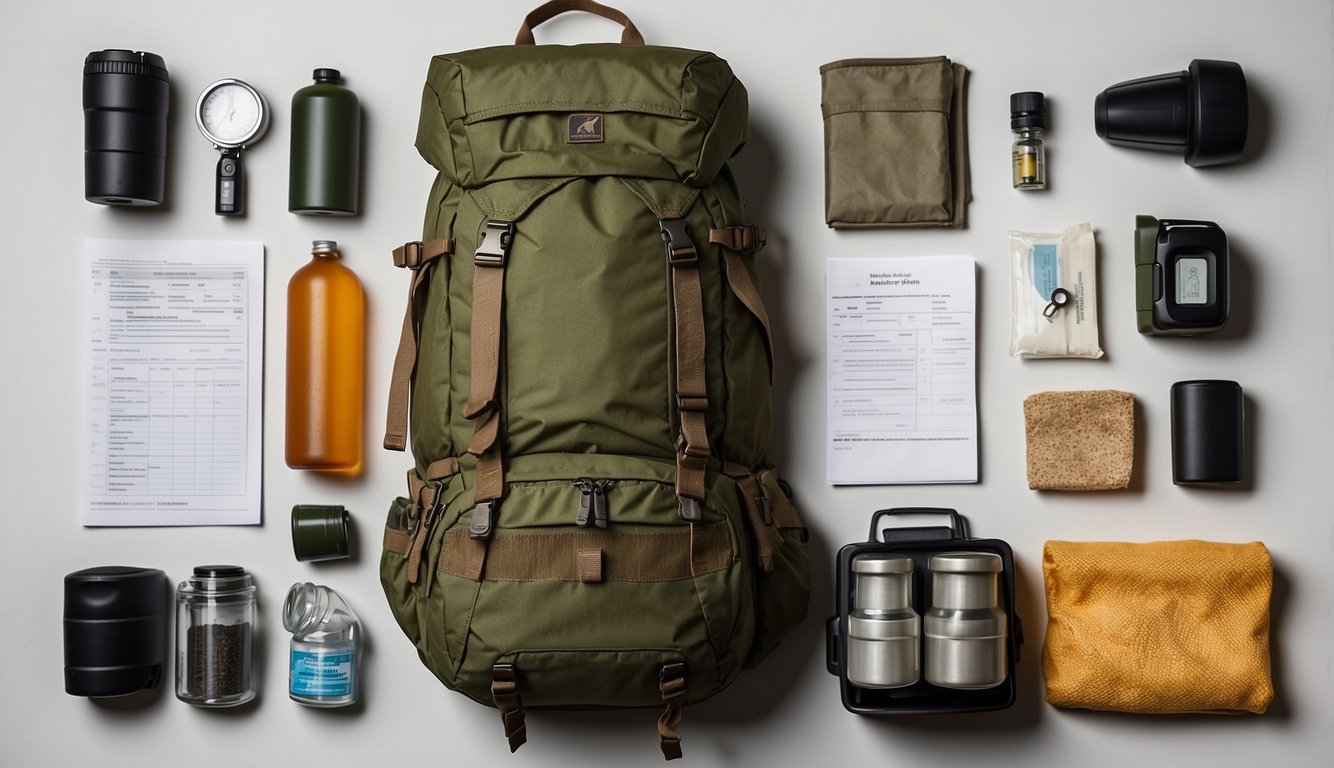
Your bug out plan is a predefined strategy that stipulates how to evacuate and survive during an emergency. A sound plan is comprised of well-organized components, each designed to cater to specific survival needs.
Bug Out Bag Essentials
Your bug out bag should include all critical gear and supplies necessary for at least 72 hours. Include:
- Food: Non-perishable items, energy bars.
- Water: Bottles, purification tablets, or filters.
- Shelter: Compact tent or space blanket.
- Clothing: Weather-appropriate layers and durable footwear.
- First Aid Kit: Bandages, medications, and essential tools.
- Tools: Knife, multi-tool, fire-starting equipment.
- Lighting: Flashlight or headlamp with extra batteries.
Remember to routinely rotate your food and water to maintain freshness and check your gear for any wear and tear.
Choosing a Bug Out Location
Select a bug out location (BOL) that:
- Is readily accessible from your home.
- Provides adequate shelter and resources.
- Is positioned in a safe, less congested area.
When planning for multiple family members, choose a destination that can support the group’s needs.
Planning Your Evacuation Route
Map out primary and alternative routes to your BOL using:
- Maps: Both physical and digital.
- GPS: Ensure devices are charged and functional.
Avoid main roads that may be congested in a disaster. Identify natural landmarks and safe havens en route.
Communication and Rally Points
Establish a disaster communication plan that covers:
- Rally point: A meeting place if separated during an emergency.
- Emergency Contacts: Local and out-of-area contacts.
- Backup Communication: Two-way radios, if cellular networks fail.
Rehearse your plan and communication strategies with your family to ensure everyone is informed and prepared.
Preparedness and Survival Skills
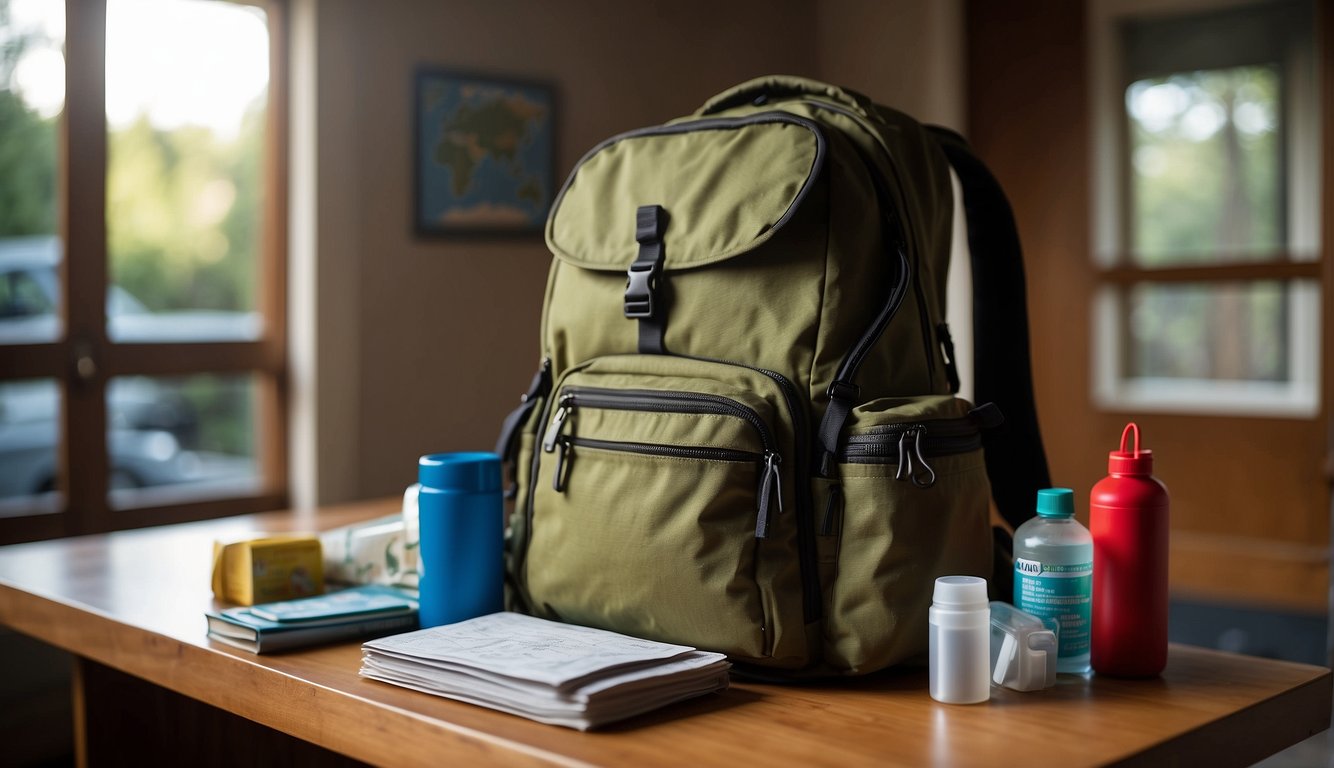
In building a bug out plan, your preparedness and survival skills are paramount. You must prioritize learning crucial abilities, maintaining physical and mental readiness, and honing your first aid capabilities to ensure you can navigate emergencies with confidence.
Developing Survival Skills
To survive in various emergencies, you must acquire a range of survival skills. This includes:
- Navigation: Learn to use a compass and map to find your way even without technological aids.
- Shelter Building: Practice constructing temporary shelters to protect from harsh conditions using materials found in the environment.
- Water Purification: Understand methods to purify water, such as boiling, chemical treatments, or using a portable filter.
- Fire Starting: Master different techniques for starting a fire, crucial for warmth, cooking, and signaling for help.
Physical Fitness and Mental Preparedness
Your physical fitness and mental state play crucial roles in survival situations. Focus on these areas to improve your readiness:
- Fitness: Engage in regular exercise to build strength, endurance, and flexibility, aiding maneuverability across challenging terrains.
- Stress Management: Practice stress-reduction techniques such as deep breathing and mindfulness to help maintain clarity and decision-making under pressure.
First Aid and Emergency Medical Skills
A solid understanding of first aid and the ability to apply it is vital. Your first aid kit should be well-equipped, and your skills sharp:
- Basic First Aid: Learn CPR, wound care, splinting, and shock management.
- Medical Knowledge: Recognize symptoms of common injuries and illnesses that you may encounter and know the appropriate treatments.
Always continue to build on these skills and refresh your knowledge regularly to be truly prepared.
Practical Aspects of a Bug Out Plan
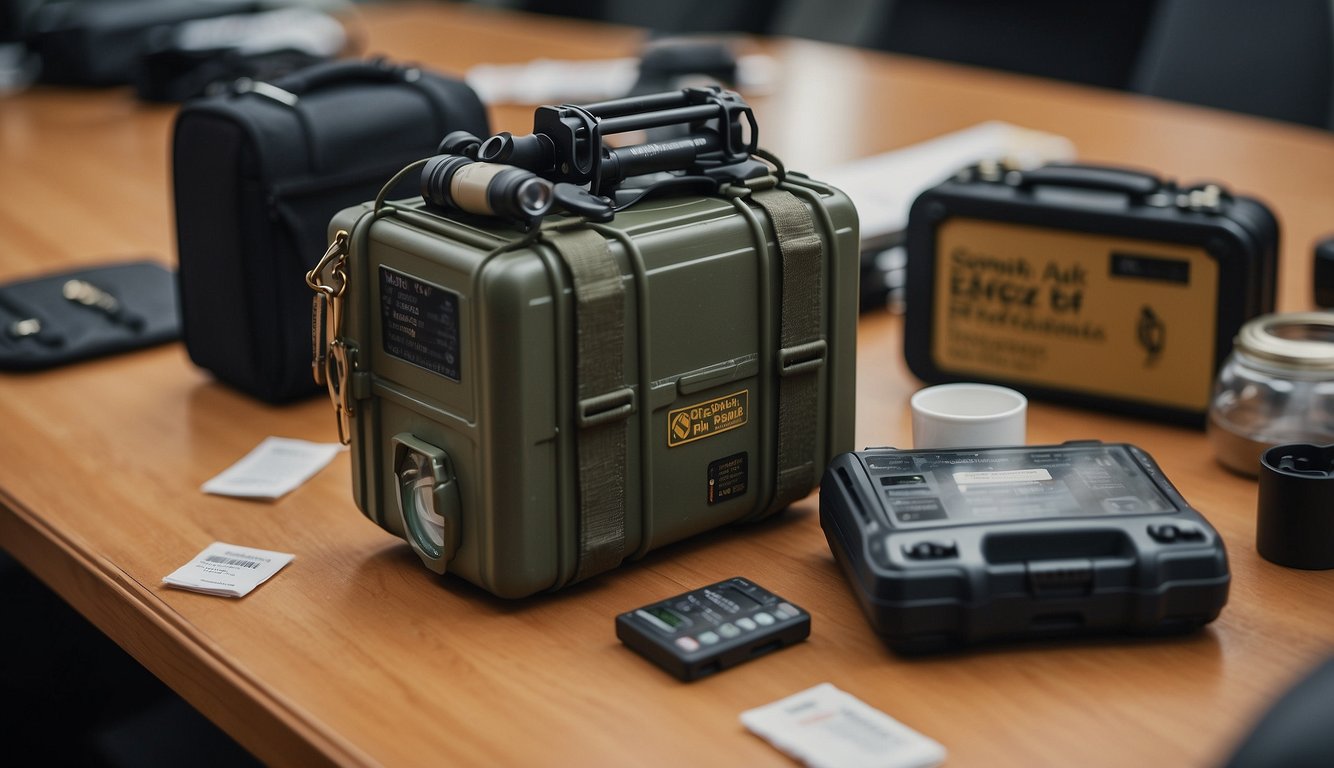
Creating a successful bug out plan involves detailed preparation in selecting the right equipment and strategies for a swift evacuation. The essentials range from assembling a well-stocked bag to choosing a reliable vehicle, and planning for long-term sustenance.
Building Your Bug Out Bag
Your bug out bag is the foundation of your survival gear. Think of it as a portable kit that sustains you for at least 72 hours. Below is a basic checklist for your bag:
- Essential Items:
- Water (one gallon per person per day)
- Food (non-perishable, easy-to-prepare items)
- Clothing (weather-appropriate and durable)
- First aid kit
- Tools and Equipment:
- Knife
- Flashlight with extra batteries
- Multipurpose tool
- Maps and compass
- Personal Documents and Money:
- Personal identification
- Cash and credit cards
Selecting a Bug Out Vehicle
Choosing the right bug out vehicle is crucial for transportation to your safe location. Your vehicle should be:
- Reliable: Regular maintenance checks to ensure working condition.
- Capable: Suitable for off-road and adverse conditions if necessary.
- Spacious: Enough room to carry your survival supplies and passengers.
Consider factors like fuel efficiency, 4-wheel drive capability, and the ability to maneuver through various terrains.
Long-Term Survival Strategies
For survival scenarios extending beyond the initial 72-hour period, consider the following for your long-term strategy:
- Food and Water Storage:
- Plan for renewable food sources (hunting, fishing, gardening).
- Invest in water purification methods.
- Shelter and Location:
- Learn about constructing shelters with natural materials.
- Choose a strategic and defensible location if required to settle longer.
- Skill Development:
- Acquire skills like fire-making, water sourcing, and shelter building.
Your long-term plans should focus on self-sufficiency and sustainability to support you indefinitely.
Family and Group Considerations

When creating a bug out plan, addressing the specific needs of every member of your group, especially children and the elderly, is crucial. Assigning tasks based on abilities ensures efficiency and safety for everyone involved.
Prepping with Children
- Communication: Teach your children clear and simple emergency protocols.
- Entertainment: Pack age-appropriate items to keep them calm and occupied.
- Education: Familiarize them with the bug out plan through drills and discussions.
Team Dynamics and Responsibilities
- Roles: Assign tasks such as navigation, first aid, and camp setup based on skill and ability.
- Elderly Care: Plan for the mobility and medical needs of elderly members.
- Practice: Regularly rehearse your plan to reinforce team roles and dynamics.
Dealing with Various Emergencies
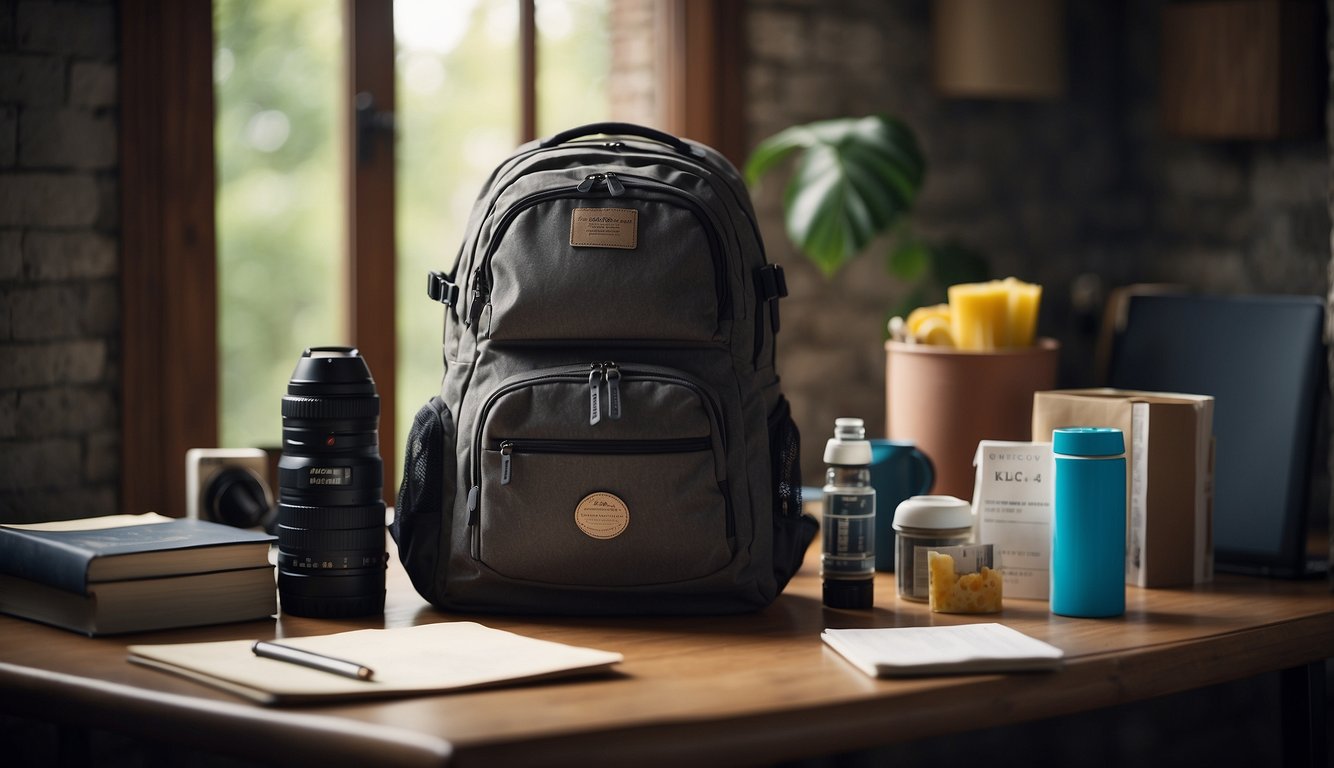
In formulating a bug out plan, it’s essential to prepare for specific scenarios you may face. Your survival depends on how effectively you address the distinct challenges of various emergencies, from natural disasters to unexpected martial law.
Natural Disasters and Weather-Related Events
- Hurricanes: Secure a bug out bag with essentials such as water, food, first aid, and personal documents. Know the evacuation routes and have a predefined destination.
- Storms: Maintain a sturdy shelter option within your bug out plan, whether it involves reinforced areas in your home or external shelters.
Urban Survival During Crisis
Crisis Management:
- Short-term: Keep an emergency kit in your home and vehicle, containing water, non-perishable food, and a radio for updates.
- Long-term: Familiarize yourself with local resources, such as food distribution centers and medical facilities.
Terrorism: Stay alert to public advisories, have an escape route from urban centers, and prepare a discrete bug out location.
War and Martial Law Scenarios
War Preparedness:
- Shelter: Your bug out location should be away from potential targets; think rural or natural hideouts.
- Supplies: Stockpile long-term storage food, water purification methods, and self-defense tools.
Martial Law:
- Communication: Keep a hand-crank or solar-powered radio to stay informed without relying on the internet or public networks.
- Evacuation: Plan multiple exit strategies from your primary residence to account for restricted movement.
Supplies and Gear Maintenance
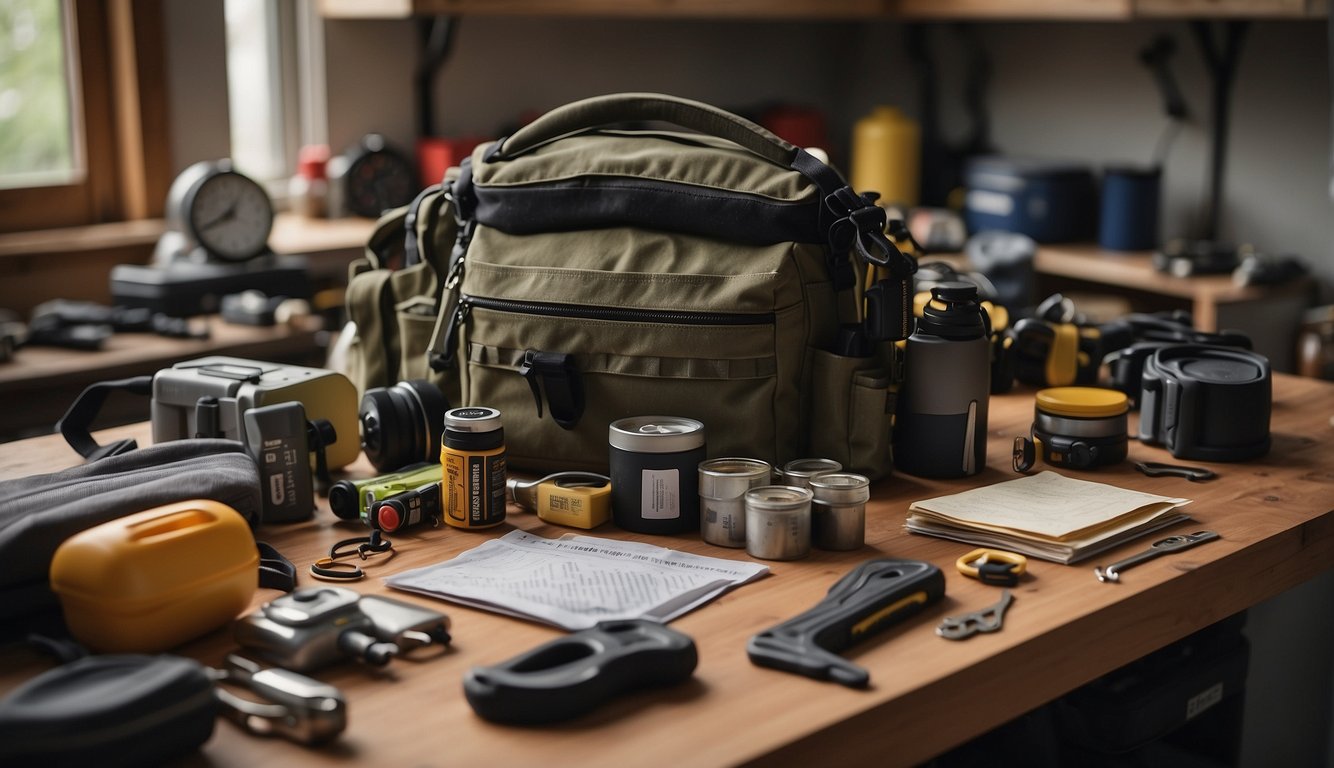
In a bug out plan, maintaining your supplies and gear is crucial to ensure their functionality when needed. This maintenance involves inspecting, replenishing, and upgrading essential items from food to survival gear.
Food and Water Storage
Food: Your stored food should be non-perishable and rotated regularly to prevent spoilage. Use a First In, First Out (FIFO) system to keep track of expiration dates.
- Canned goods: 2-5 years shelf life
- Dried grains and legumes: up to 10 years in airtight containers
- Freeze-dried meals: 5-25 years depending on the packaging
Water: Store at least one gallon of water per person per day and check containers every six months for integrity.
- Bottled water: Replace yearly
- Water purification tablets: Check expiry dates
Tools and Weapon Selection
- Knife: Essential for many tasks; keep it sharp and oil moving parts. Consider a full-tang design for durability.
- Ammo: Rotate stock to avoid deterioration; keep in a cool, dry place. Label boxes with purchase dates and check for corrosion.
- Lighters: Have multiple lighters and replenish your stock. Check fluid levels or battery charge, depending on type.
- Other Tools: Regularly inspect and maintain to ensure readiness; this includes multitools and repair kits.
Essential Gear Upkeep and Replacement
- Clothing: Inspect for wear and tear; replace as needed. Opt for materials that offer durability and protection, like rip-stop fabrics.
- Survival Gear (tents, sleeping bags):
- Tents should be dry and free of mildew before storing.
- Sleeping bags should be stored uncompressed to maintain loft.
- Fuel: Store properly and rotate similar to food using FIFO method; essential for stoves and generators.
- Medicines: Monitor expiry dates and storage conditions; update your first aid kit with fresh supplies.
Special Considerations
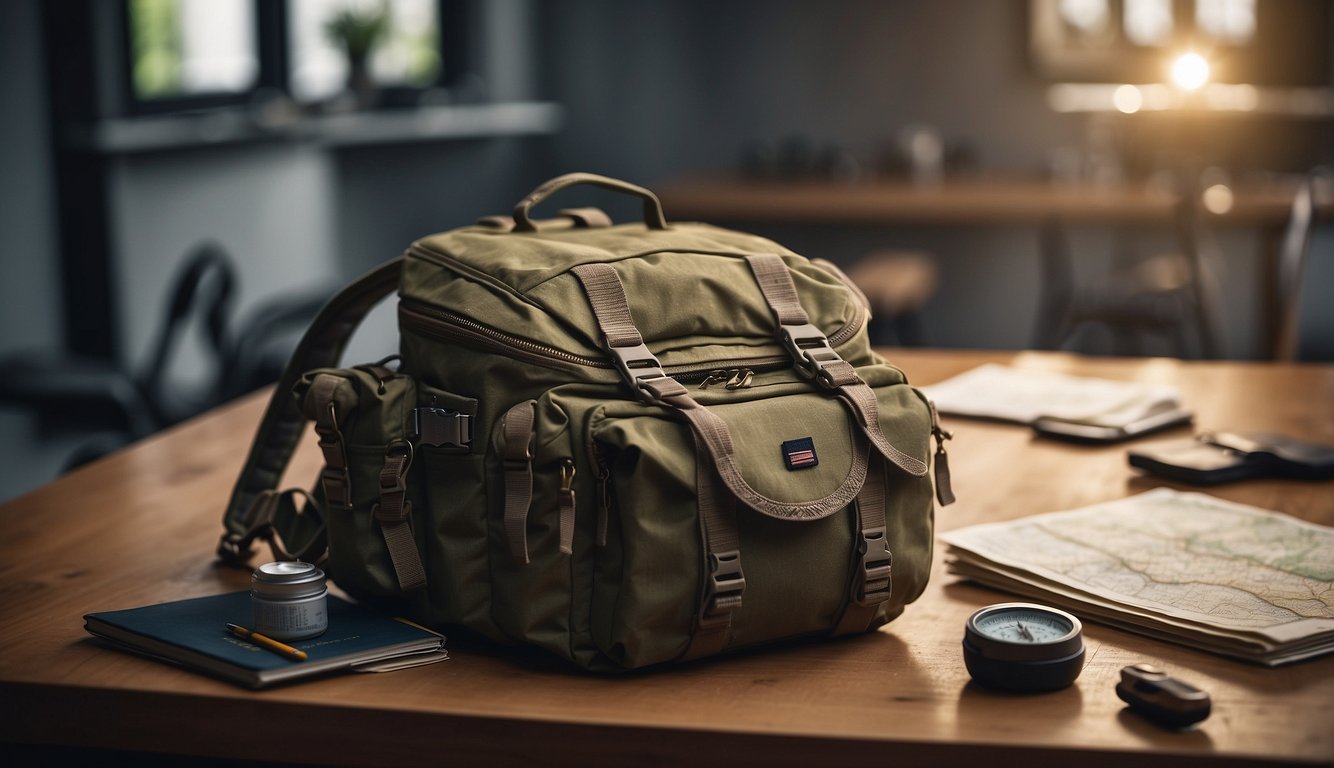
In preparing a bug out plan, your ability to adapt, ensure security, and establish a viable long-term shelter are critical. These considerations are crucial to maintaining safety and reducing risks associated with emergency evacuation.
Adapting to Changing Situations
Your bug out plan must have flexibility built into it. Circumstances can change rapidly, and the initial route or location might become unviable. You should identify alternative routes and backup locations. Consider the following:
- Use real-time information to assess current conditions.
- Have a blend of options for transportation: cars, bikes, or even traveling on foot.
Security and Self-Defense
Your safety is paramount in crisis situations. The security features of your bug out plan should be multi-faceted:
- Equip yourself with self-defense skills and tools suitable for your environment.
- Ensure security measures are in place for any situation, such as a concealed carry permit where legal.
Long-Term Shelter and Settlement
The ultimate goal is to reach a safe, sustainable shelter. When choosing a bug out location, take into account:
- Sustainability features like water access and arable land.
- Proximity to resources yet sufficiently isolated for security purposes.
Remember to consider local risks, such as natural disaster zones, when selecting your shelter. Selecting your shelter and route requires methodical thinking and strategic planning.
Additional Preparations and Tips
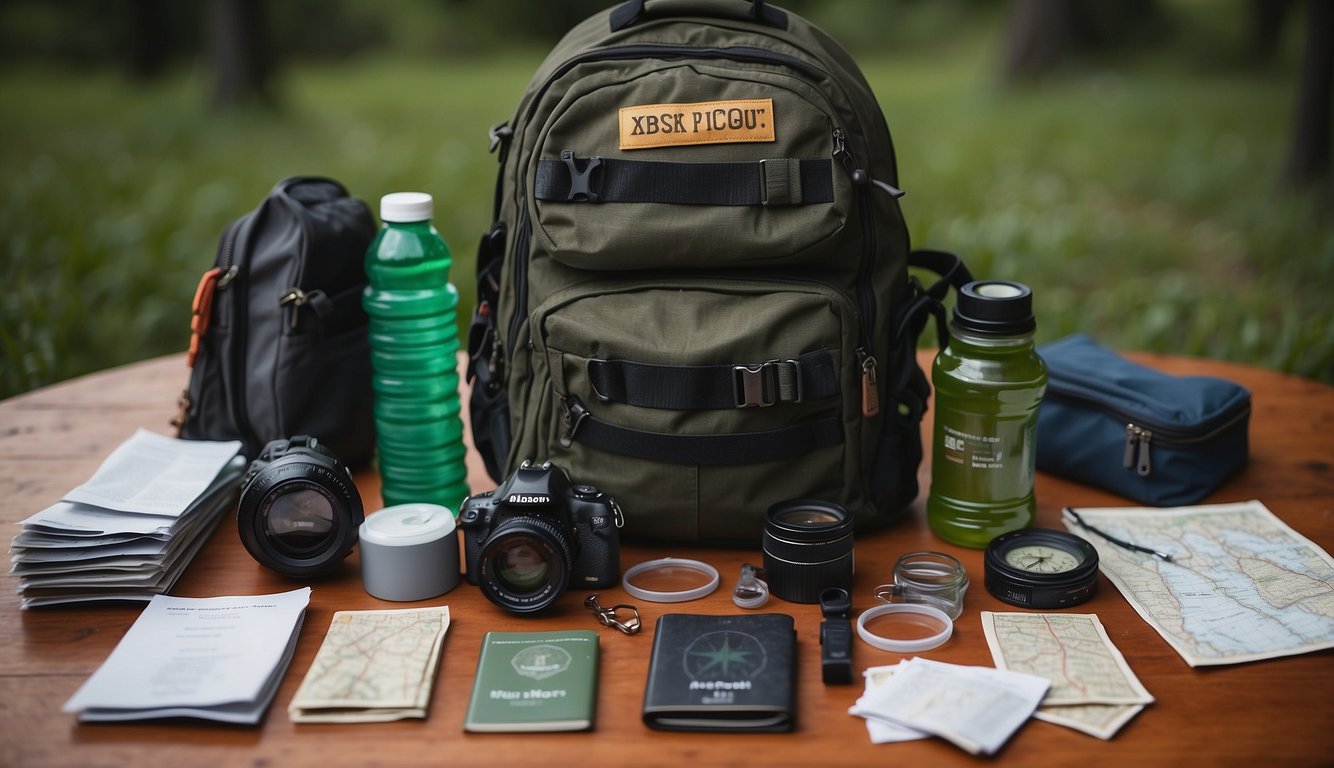
For a robust bug out plan, enhancing your survival skill set is critical. Focus on developing navigation and communication abilities as well as practical camping experience.
Navigational Skills and Map Reading
Mastering navigation is vital. Your ability to read maps and use a compass can mean the difference between reaching a safe location and getting lost.
- Map Reading: Familiarize yourself with topographical maps and landmarks.
- GPS Devices: Learn to operate GPS devices, but don’t rely solely on them. Keep maps as a backup.
Camping and Outdoor Living
Your bug out plan should include skills for camping and sustaining life outdoors.
- Shelter: Know how to construct shelters with natural materials and with tents or tarps.
- Fire Starting: Practice making a fire under different weather conditions.
- Survival Caches: Consider setting up survival caches along your bug out route with supplies.
Post-Disaster Communication
After a disaster, conventional communication methods may fail. It’s important to have alternative means.
- Walkie-Talkies and Radios: Ensure you have battery-operated or hand-crank radios and know the operation of walkie-talkies.
- Rally Points: Set predetermined rally points for you to meet with your group.
Regular practice runs and drills will ensure your preparedness. Make sure each family member is familiar with the plan and equipment.
Conclusion
A bug out plan isn’t just a set piece of knowledge; it’s a dynamic strategy that hinges on your capacity for preparedness and adaptability. The following subsections expound on the indispensable elements of refining and maintaining your bug out plan.
The Importance of Regular Practice and Review
Regular practice runs and reviews of your bug out plan are essential to ensure you’re well-prepared for an actual emergency. Practice runs allow you to identify any gaps or issues in your plan, helping to ingrain the necessary actions into your memory. This isn’t a one-time event—periodic reviews and updates to your plan are just as crucial to account for changes in your personal situation, environment, and resources.
- Frequency of Practice: Aim for at least semi-annual drills.
- Review Checklist:
- Update emergency contact information.
- Reassess routes and destinations.
- Check equipment and supplies.
Community Involvement and Networking
You’re not alone in emergency situations; your community can be a vital resource. Establishing relationships with neighbors and local emergency personnel can significantly bolster your bug out plan’s effectiveness. Involve yourself in community preparedness initiatives and consider how you can contribute responsibly.
- Networking Actions:
- Join local preparedness groups.
- Volunteer for community safety programs.
- Share resources and knowledge.
Legal and Ethical Considerations
It’s important to be a responsible citizen even in the face of emergencies. Your bug out plan should align with legal guidelines and respect ethical considerations. This includes respecting private property during evacuations and following any governmental instructions during crises.
- Legal Preparedness:
- Stay informed about local laws and regulations.
- Incorporate legal restrictions into your plan.
By focusing on these aspects, you’ll enhance your readiness and ability to respond effectively. Remember, the goal of your bug out plan is to keep you safe while ensuring you remain a responsible member of your community.
Glossary
Bug Out Plan (BOP): Your strategy for evacuation in case of an emergency. It includes a set of procedures developed for rapid departure from your home or workplace.
Urban Survival: Skills and strategies you employ to navigate through city-specific challenges during a crisis, such as navigating without a GPS or finding safe shelter amidst chaos.
Military Precision: Planning and execution of your BOP with strict discipline and efficiency, often emulating methods used by armed forces.
Stranger Contact: Interaction with unfamiliar individuals during an emergency. Your plan should include methods to assess trustworthily and maintain personal security.
Natural Disaster: Catastrophic environmental events like earthquakes, floods, or hurricanes. Your bug-out plan should be tailored based on potential natural threats in your area.
Heat Source: Your plan to ensure warmth during a bug out, especially if in cold environments. Consider portable options like heat packs or emergency blankets.
Security Measures: Protocols within your BOP designed to protect you, your family, and your possessions from potential threats during a movement.
Emergency Plan: The broader framework that encompasses your bug-out plan, detailing actions before, during, and after an emergency.
Vacation Mentality: A mindset to avoid while bug out planning, keeping focus on essentials and survival, rather than leisure items.
Bugout Item: Essential gear or supply included in your bug out bag (BOB) for survival, e.g., water filter, first aid kit, or fire starter.
References
When you’re gathering information for your bug out plan, it is critical to consult credible sources. Emergency Preparedness Guidelines provided by your local government are foundational documents. These often include region-specific advice that can be crucial in planning your evacuation strategy.
- Local Emergency Services: Information about regional risks, such as natural disasters or industrial accidents.
- National Weather Service: Updates on weather-related threats that could necessitate a bug out.
- Federal Emergency Management Agency (FEMA): Guides for preparing emergency kits and plans.
Use the following table to organize your references and ensure you have access to these sources quickly:
| Source | Description | Access Method |
|---|---|---|
| Local Emergency Services | Customized alerts and evacuation routes | Online / Phone App |
| National Weather Service | Weather alerts | Website / Radio |
| FEMA | Comprehensive planning documents | Printed Material / Website |
Remember to regularly review and update your information sources to maintain the accuracy of your bug out plan. Reliable references form the backbone of effective preparedness.

Leave a Reply